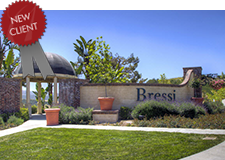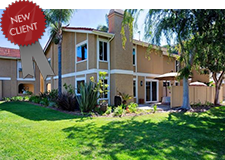 In the recent case of Dynamex Operations West, Inc. v. Superior Court, the California Supreme Court set forth a new test that employers should utilize to determine whether their workers are appropriately classified as independent contractors or employees. (Dynamex Operations West, Inc. v. Superior Court (2018) 4 Cal. 5th 903.) The new test will likely have a significant impact on the obligations and liabilities of employers for matters involving payroll taxes, worker’s compensation insurance, IRS reporting, and minimum wage and overtime requirements. In light of the Dynamex decision, all California employers, like homeowners associations, should re-evaluate whether they have appropriately classified their third-party vendors as independent contractors.
In the recent case of Dynamex Operations West, Inc. v. Superior Court, the California Supreme Court set forth a new test that employers should utilize to determine whether their workers are appropriately classified as independent contractors or employees. (Dynamex Operations West, Inc. v. Superior Court (2018) 4 Cal. 5th 903.) The new test will likely have a significant impact on the obligations and liabilities of employers for matters involving payroll taxes, worker’s compensation insurance, IRS reporting, and minimum wage and overtime requirements. In light of the Dynamex decision, all California employers, like homeowners associations, should re-evaluate whether they have appropriately classified their third-party vendors as independent contractors.
The Supreme Court simplified the test that was previously used to classify workers. Prior to the decision in Dynamex, a multi-factor test was utilized. The principal factor was whether the employer had the right to control the manner and means in which work was performed. However, the courts also considered several other secondary factors, such as whether the employer could discharge the worker at will; the level of skill required to perform the work; whether the employer supplied the tools and location to work; the length of time to be worked; the method of payment (whether by time or by job); whether the worker usually performed this type of work; and the subjective beliefs of both parties. This “totality of the circumstances” test created a substantial amount of uncertainty among employers.
The new Dynamex test, referred to as the “ABC Test,” makes is easier for employers to determine in advance whether their workers should be classified as employees or independent contractors. Although the new test is easier to utilize, employers will now find that it is more difficult to classify their workers as independent contractors. The ABC Test begins with the presumption that all workers are employees. To classify a worker as an independent contractor, the employer bears the burden of proving three elements.
First, the worker must be free from the employer’s control and direction, both in actuality and in contract. This prong is essentially a restatement of the principal factor in the pre-Dynamex test, which requires genuine independent contractors to control the manner and means in which they perform their own work.
Second, the worker must perform work for the employer that is outside of the employer’s usual course of business. For example, a homeowners association would likely be able to satisfy Part B, when dealing with workers hired to perform janitorial or landscaping services. This is because homeowners associations are not in the janitorial or landscaping business; rather, homeowners associations are in the business of managing and maintaining Common Interest Developments.
Third, the worker must be customarily engaged in an independently established trade, occupation, or business of the same nature of work performed for the employer. Using the example from above, a homeowners association could satisfy Part C of the test, if it could show that its janitor or landscaper provides the same janitorial or landscaping services for other homeowners association as well. True independent contractors have their own business cards, a separate place of business, and their own book of clients.
| It is important to note that the Supreme Court specifically limited its Dynamex holding to disputes involving Wage Orders issued by the Industrial Welfare Commission. In order words, the case’s holding should only be applied to lawsuits that allege violations of Wage Orders (i.e., involving meal and rest breaks and overtime wages). At this point, it is uncertain whether the new ABC Test will be applied to all other legal claims brought against employers. Nonetheless, homeowners associations that routinely hire independent contractors should carefully re-evaluate their hiring procedures to ensure that their workers are properly classified under the ABC Test. |
-Blog post authored by TLG Attorney, Sarah A. Kyriakedes, Esq.
 HOA Lawyer Blog
HOA Lawyer Blog


 We are proud to announce that Bressi Ranch Community Association has selected Tinnelly Law Group as their association’s legal counsel.
We are proud to announce that Bressi Ranch Community Association has selected Tinnelly Law Group as their association’s legal counsel. Jade Tree Owners Association has selected Tinnelly Law Group as their association’s legal counsel.
Jade Tree Owners Association has selected Tinnelly Law Group as their association’s legal counsel. Assembly Bill 2912
Assembly Bill 2912 Juniper at Portola Springs Homeowners Association has selected Tinnelly Law Group as their association’s legal counsel.
Juniper at Portola Springs Homeowners Association has selected Tinnelly Law Group as their association’s legal counsel. We are proud to announce that Dorado Homeowners Association has selected Tinnelly Law Group as their association’s legal counsel.
We are proud to announce that Dorado Homeowners Association has selected Tinnelly Law Group as their association’s legal counsel. It is well settled that an association’s CC&Rs (“Declaration”) establishes and controls, among other things, a board’s authority to govern an association provided that the CC&Rs do not conflict with California law and regulations (i.e.,
It is well settled that an association’s CC&Rs (“Declaration”) establishes and controls, among other things, a board’s authority to govern an association provided that the CC&Rs do not conflict with California law and regulations (i.e.,  We are proud to announce that Breeza Owners Association has selected Tinnelly Law Group as their association’s legal counsel.
We are proud to announce that Breeza Owners Association has selected Tinnelly Law Group as their association’s legal counsel. We are proud to announce that Pacific Island Villas Homeowners’ Association has selected Tinnelly Law Group as their association’s legal counsel.
We are proud to announce that Pacific Island Villas Homeowners’ Association has selected Tinnelly Law Group as their association’s legal counsel. *Asked & Answered
*Asked & Answered